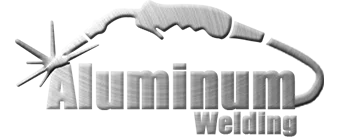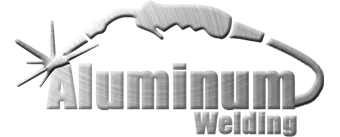
Gas Metal Arc Welding
Gas metal arc welding (GMAW) is one of the most versatile and important industrial welding processes. It is a crucial process that allows you to weld all types of commercially available metals and alloys. It is also compatible with all the weld positions. It is one of our key areas of specialization. Like another welding technique, GMAW has its own strengths and weaknesses.
We know when to apply gas metal arc welding and when to go for the other welding techniques. The good thing is that we have the right equipment and other resources to deliver the best aluminum welding services. our company offers both residential and commercial metal welding in San Bernardino, Ventura, Riverside, Los Angeles and Ventura. Let us now get a better understanding of what is Gas Metal Arc Welding before we move forward.
What is Gas Metal Arc Welding?
GMAW (gas metal arc welding) uses a power supply and a continuously fed and consumable wire electrode in creating an electrical arc between the workspace and the electrode. This, in turn, hits up the metals and allows them to join perfectly.
The technique also uses a shielding gas to protect your weld from contamination from the environment. If you make use of an inert gas, you can refer to this process as metal inert gas or MIG. If what you are using is an inert gas, the process is often known as metal active gas (MAG). You can also refer to the process through the metal transfer mode that it uses. For instance, “GMAW – P” is the pulsed gas metal arc welding. It is good to understand how these metal transfer modes work.
As we have already stated, GMAW can either use active or inert gas because the shielding gas has so many metal transfer modes. It normally utilizes a constant voltage and direct current powering system. However, it can also use the alternating current and a broad range of various volts and amps together with various diameter wire electrodes.
Lastly, it can be a semi-automatic process that has a human operator. The process can also be fully automatic to yield higher productivity. With this wide range of options, it means that when you configure it properly, you can use GMAW industrial alloy or metal in any weld positions.
Metal Transfer Modes for the Gas Metal Arc Welding Process
Gas metal arc welding can use several metal transfer modes. The main ones include;
Globular
The globular metal transfer mode makes use of carbon dioxide as the main shielding gas. It is an advantage because argon, which is the other shielding gas, is more expensive than carbon dioxide. The globular mode also has a higher deposition rate that supports fast welding speeds.
However, the globular mode tends to produce more heat in comparison to the other modes. This may in turn result into uneven or irregular welding surfaces. It also requires thick workpieces, is prone to spatter, and you must use it on horizontal or flat welding positions. These drawbacks make globular to be the least utilized gas metal arc welding variations for the purposes of industrial welding.
Short-Circuiting
The other name for the short-circuiting transfer mode is Short-arc GMAW or SCT. In the short-circuiting mode, the metallic molten droplets will actually bridge the space that is between the weld pool and the electrode hence extinguishing the arc. However, almost with immediate effect, the surface tension that is between the weld pool and the molten bead makes the bead to be pulled off the electrode hence reigniting the arc.
This process takes place at a rate that is approximately one hundred times per second. Thus, it is not visible to the human eye hence making the arc to appear as if it is constant. However, this process instead calls for a much slower wire feed rate.
The other benefit of short-circuiting is that it can use thinner metal workpieces than the globular method. However, you can still only use it on ferrous metals. If you use it on thick metals, it can lead to a lack of fusion and an insufficient welding penetration.
Spray
The original transfer mode for gas metal arc welding is the spray transfer option. This technique was developed in the 1940’s to support the welding of non-ferrous metallic materials like aluminum. This transfer mode rapidly passes the welding electrode along a stable electric arc to your workspace. It results into an excellent welding finish with no to no to very little spatter.
It is possible because at higher voltages and currents, the molten droplets will change from globules to much small droplets and ultimately to a vaporized steam. However, this calls for a larger weld pool and more heat. What this implies is that the thickness of the workpiece should be at least a quarter an inch or even more. The larger weld pool also limits the possible welding positions.
Pulsed Spray
The other terminology that is used to refer to the pulsed-spray mode is pulsed, pulsed MIG., pulsed gas metal arc welding, or GMAW-P. This process is a variation of the famous spray transfer mode. However, the process utilizes a pulsing current instead of a pulsing current. It allows a single molten metal droplet to fall in each pulse. It also has a lower average current which reduces the heat and allows for a small weld pool.
The smaller weld pool and lower heat allow you to weld thin metal work pieces in all the weld positions. It makes GMAW-P to be among the most popular and useful industrial welding processes. You can learn more details about this process by reading further.
Benefit of Gas Metal Arc Welding
- You can fully automate the GMAW process hence yielding a higher productivity.
- GMAW needs less operator skills when you compare it with SMAW
- GMAW applies to all welding positions.
- Can us GMAW for all types of alloys and metals.
- It uses a continuously-fed electrode and this in turn minimizes the defects because you don’t need any restarts.
- GMAW does not use a slag and this reduces the post-weld clean up.
- It produces lower fume levels in comparison to SMAW or FCAW
- GMAW has an excellent welding penetration hence allowing good strength with small weld sizes.
Limitations of GMAW
- The equipment that GMAW utilizes is relatively complicated and extensive when you compare it with the other welding processes.
- SMAW is more portable than GMAW
- You cannot use GMAW in the outdoors or in an area that has draft because it will dissipate the shielding gas.
- GMAW needs rust-free and very clean base metals.
- GMAW is less suitable for constricted, smaller spaces because of the nature of the welding torch and hence needs the gas shielding to be relatively closer to the welding area.
- The deposition rates of GMAW are lower than FCAW if you are welding out of the position.
- GMAW needs you to se the process parameters carefully in order to avoid fusion defects especially when dealing with thick base metals.
Aluminum welding has a strong commitment to quality and provides reliable and carefully configured GMAW that can be used in various industrial welding requirements. We aspire to produce nothing but defect free, strong, and consistent welds. GMAW is a great tool because it is flexible and has a broad range of applications. If your project calls for the use of this welding process, just know that we offer the best gas metal welding.
From our offices in California, Aluminum Welding serves households and businesses in Ventura, Riverside, San Bernardino, Los Angeles and Orange County. We offer a broad range of metal fabrication services to our esteemed customers. Contact us today to learn the kind of services that you can get from us.





